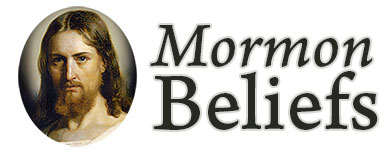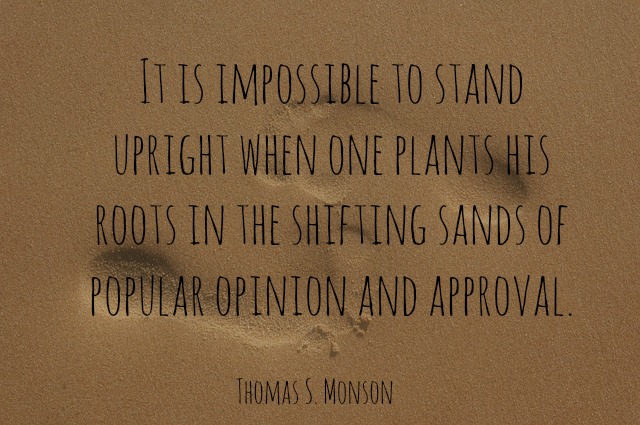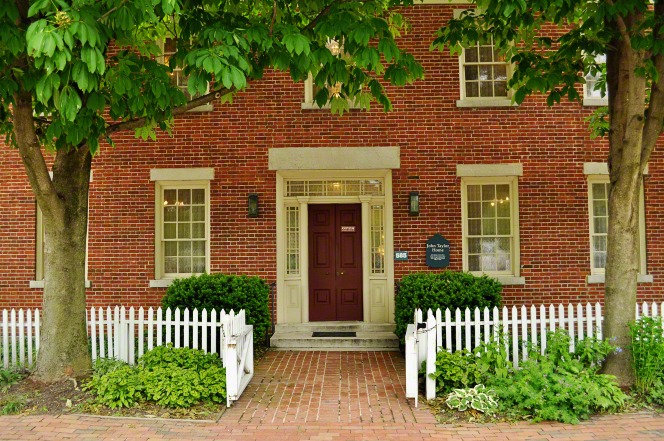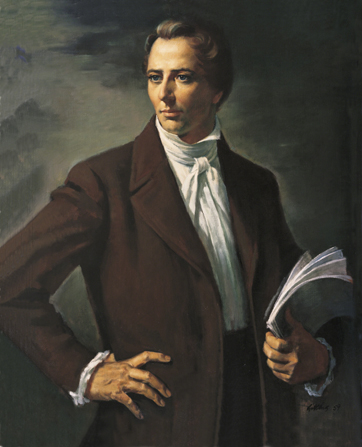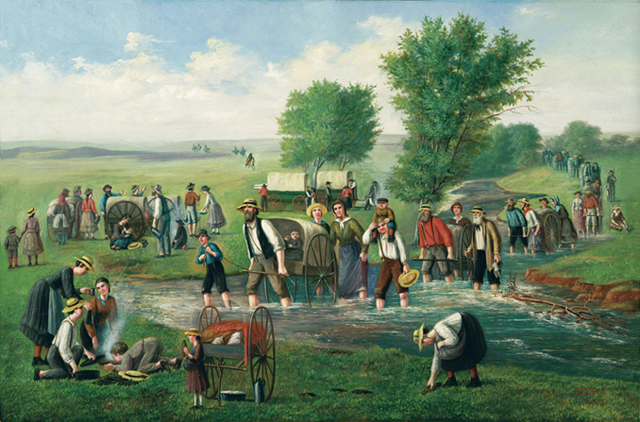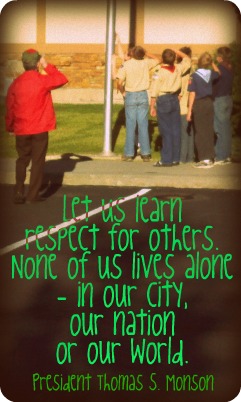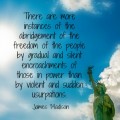From the earliest days of The Church of Jesus Christ of Latter-day Saints, Mormons have been accused of trying to take over the American government. This may have stemmed from LDS Church leaders involvement in politics and local government positions in the 1800s and perpetuated in modern times with as the Church has taken a stance on moral issues since then.
As we examine The Church of Jesus Christ’s participation in the political arena through the years, we can see that although its role has evolved, its doctrines on the subject have remained the same.
The Constitution and the Restoration
The ink on the U.S. Constitution had been dry for less than 2 decades when Joseph Smith, Jr., was born in Sharon, Vermont in 1805. Why is this important? Because this groundbreaking document laid the foundation for a new kind of government. Elder Dallin H. Oaks, a member of the Quorum of the Twelve Apostles, said:
For millennia the world’s people had been ruled by kings or tyrants. Now a group of colonies had won independence from a king and their representatives had the unique opportunity of establishing a constitutional government Abraham Lincoln would later describe as “of the people, by the people, and for the people.”
Elder L. Tom Perry said:
We believe that the Constitution was brought about by God to insure a nation where liberty could abound, where his gospel could flourish. …
Among other things, the Constitution guarantees the religious freedom that allowed the Reformation to continue and flourish. The great religious reformers began to throw off the rituals and dogmas that had been attached to Christianity during the dark ages and sought to return to the pure and simple truths of the New Testament.
In this religiously fertile environment, Jesus Christ re-established His Church on the earth through His prophet, a young, uneducated boy named Joseph Smith. The Prophet Joseph understood the importance of this new nation and the role it played in the Restoration of The Church of Jesus Christ. Joseph Smith said (Teachings of the Prophet Joseph Smith, p. 147):
The Constitution of the United States is a glorious standard; it is founded in the wisdom of God. It is a heavenly banner.
LDS Views on Government
It is not surprising that only 5 years after The Church of Jesus Christ of Latter-day Saints was officially organized, Church leaders felt the need to defend against anti-government accusations. The result was Section 134 of the Doctrine and Covenants, which states that “governments were instituted by God for the benefit of man” and that God will hold all people “accountable for their acts in relation to them, both in making laws and administering them, for the good and safety of society” (Doctrine & Covenants 134:1).
Latter-day Saints are also encouraged to be good citizens wherever they live. The 12th Article of Faith states:
We believe in being subject to kings, presidents, rulers and magistrates, in obeying, honoring, and sustaining the law.
Being a good citizen means not only obeying the laws of the land but also participating when and where it is appropriate. The First Presidency has stated:
We urge our members to do their civic duty and to assume their responsibilities as individual citizens in seeking solutions to the problems which beset our cities and communities. …
Where solutions to these practical problems require cooperative action with those not of our faith, members should not be reticent in doing their part in joining and leading in those efforts where they can make an individual contribution to those causes which are consistent with the standards of the Church.
This participation includes not only educating oneself on the issues and voting, but also in running for office or serving in other government positions as deemed appropriate by the individual and his or her family.
In short, the government promotes law and order and upholds the rights of each citizen. And the citizens obey the laws of the land and work together to uphold the moral fabric of society. In the worldwide Church of Jesus Christ, this participation will vary according to the laws of the land. The point is that we do what we can.
In the early days of the Church, members were trying to do just that. But in this fledgling nation, the young Church was finding it difficult to fit in. It is in this context that the political participation of the early Church and its leaders is best understood.
Travails of the Young Church

The concept of continuing revelation was a cause of concern and contention for those outside of The Church of Jesus Christ of Latter-day Saints.
The Church of Jesus Christ of Latter-day Saints was officially organized on April 6, 1830, in Fayette, Seneca County, New York. But all was not easy for the infant organization. Roger M. Barrus, professor of government and foreign affairs at Hampden-Sydney College in Virginia, wrote:
From its inception in western New York in 1830, the LDS Church was politically controversial. The deepest cause of conflict directly or indirectly affecting political relationships between Latter-day Saints and others was the belief in continuing revelation. Non-Mormons viewed the claim of continuing revelation and the social and political forms built on that claim as threats to democratic self-government.
Undaunted by the persecution, the Latter-day Saints were determined to gather and create Zion—a just and peaceful society built upon the teachings of the gospel of Jesus Christ. They began building Zion in Kirtland, Ohio, and Jackson County, Missouri. Barrus wrote:
The establishment of Zion required the unity of the LDS community in righteousness. The effort brought social, economic, and political innovations, including the gathering of the Saints, consecration and stewardship, the United Order, and plural marriage. In all matters relevant to building Zion, the LDS community looked to the Prophet for guidance, concentrating power, even against his own inclinations, in his hands.
Efforts to establish Zion excited fear and animosity. Made uneasy by ever-increasing numbers of Latter-day Saints and shocked or bemused by their economic and social experiments, many non-Mormons viewed the Saints as alien and hostile, even as a threat to their freedoms as Americans. Because the Church seemed to erase the distinction between church and state—in American liberal political thought an important pillar of liberty—some felt that it portended the rise of religious despotism. The result was recurring political conflict, which time and again threatened the LDS community.
The late Robert E. Riggs, a former professor at Brigham Young University, wrote:
Peculiarities of doctrine and practice, accompanied by social cohesion that appeared threatening to outsiders, spawned both persecution and frequent litigation for the Church and its leaders. In western New York, where the Church had its genesis, and in Ohio, where the Prophet Joseph Smith moved in 1831, evenhanded justice was generally available in the courts.
But the persecution and trials intensified. The Latter-day Saints in Jackson County were forced out of their homes by angry mobs. They relocated to Clay County, Missouri, only to again be forced out by angry mobs.
Missouri courts were not sympathetic and refused to help the refugees nor compensate them for loss of property and life. The Prophet Joseph and other Church leaders were even arrested as instigators of the violence against them. The Latter-day Saints eventually were forced out for good when then-Governor Lilburn Boggs ordered that any Mormon found in the state could be shot on site.
By the late 1830s, the anti-Mormon sentiment was also increasing in Kirtland. Milton V. Backman, who taught Church history at BYU, wrote:
The political competition reached a peak in 1837 when Latter-day Saints were elected to all local township offices except for the office of constable. Prior to that year, only four Latter-day Saints had been elected to a major office, and there had been a tendency for the citizens to reelect the earliest settlers. In addition to gaining control of the local government, Latter-day Saints transformed the township’s voting pattern from Whig to Democratic. Since Kirtland was located in a Whig section of Ohio and all townships in Geauga County in the mid-1830s, except Kirtland, supported that party, Whigs in northeastern Ohio united in opposition to the Mormons. Complaints and charges escalated into threats and mob action.
The nation’s economic crisis of the late 1830’s hit Kirtland hard, and the prophet and other Church leaders faced legal problems stemming from a failed banking endeavor. The Latter-day Saints in Kirtland soon left under threat of mob violence.
Establishing Zion in a New City—Nauvoo
It is at this time—and with this backdrop—that Church leaders and members moved to the swampy lands of Commerce in Hancock County, Illinois. Barrus wrote:
Apparently convinced that there would be no peace as long as Church members were politically at the mercy of non-Mormons, Joseph Smith sought and obtained political power for the new city. In the Nauvoo charter, the Illinois legislature empowered the city to make any ordinances not prohibited by the Constitution of the United States or that of Illinois and to organize a militia with power to execute said laws.
The Prophet Joseph and the Latter-day Saints were determined to build up a city as well as a temple to God. From the swampy marshlands, the Latter-day Saints build the city of Nauvoo on the banks of the mighty Mississippi River. Politics played an important role in this new town. Illinois historian Annette P. Hampshire wrote:
Joseph Smith’s decision to use LDS voting strength sprang from a desire for security from persecution and for self-government. Conscious of the divine imperative to gather the Saints and build the physical kingdom of God on earth, he came to see politics as one means of enlarging and protecting his community.
But here again, trouble soon developed. Barrus wrote:
… Non-Mormons resented Nauvoo’s political power, which was based on increasing LDS numbers and on their willingness to vote as a bloc to reward political friends and punish political enemies. Bloc voting was both a reflection of the social unity of the LDS community and a defensive reaction to the abuses suffered in Missouri. Yet critics condemned the Saints for “yielding implicit obedience” to a “pretended prophet of the Lord” who, they charged, was a dangerous character entertaining “the most absolute contempt for the laws of man” (History of the Church, 6:4-5).
Again, anti-Mormon persecutions were arising and the political climate in Nauvoo became problematic for The Church of Jesus Christ in the early 1840s.
Joseph Smith: U.S. Presidential Hopeful
In 1839, the Prophet Joseph and other Church leaders visited Martin Van Buren, the president of the United States, seeking redress from their persecutions—including their loss of property and homes at the hands of angry mobs. At first, the president was unmoved. Eventually, he promised to consider their plight.
The Church leaders stayed for a couple of months in the East, trying to gain support for senators and representatives who might be willing to champion their cause. When they again met with President Van Buren, he had lost all sympathy for the Latter-day Saints’ cause. According to the Prophet Joseph Smith, the president treated them rudely and said (History of the Church, 4:80):
Gentlemen, your cause is just, but I can do nothing for you. … If I take up for you I shall lose the vote of Missouri.
Arnold K. Garr, chair of the department of Church History and doctrine at BYU, wrote:
Joseph Smith’s disappointing visit to Washington, D.C., became a turning point for him. His people had been abused and unjustly treated in Missouri, and the president of the United States had refused to help. The Church leaders would remember this neglect when the time came for another presidential election.
So the Prophet Joseph began writing to the five leading presidential hopefuls, asking how each would help the Latter-day Saints if elected. Only three responded, and none had sympathy for their cause. Garr continued:
When the Prophet realized that none of the leading candidates for the presidency would pledge to support redress for the Saints, he held a historic meeting in the mayor’s office at Nauvoo on January 29, 1844, with the Quorum of the Twelve Apostles and others. It was unanimously decided that Joseph Smith would run for president of the United States on an independent platform.
Joseph Smith’s campaign did not specifically address LDS concerns. Rather, he envisioned changes to improve the United States. His platform included abolishing slavery, increasing presidential powers and prison reforms.
Joseph Smith’s presidential campaign was cut short by his assassination at the hands of a mob in Carthage Jail on June 27, 1844. Although the Prophet Joseph never lost his love and appreciation for the Constitution, he also recognized the need for change in the government. He wrote (History of the Church, 6:210–11):
I would not have suffered my name to have been used by my friends on anywise as President of the United States, or candidate for that office, if I and my friends could have had the privilege of enjoying our religious and civil rights as American citizens, even those rights which the Constitution guarantees unto all her citizens alike. But this as a people we have been denied from the beginning. Persecution has rolled upon our heads from time to time, from portions of the United States, like peals of thunder, because of our religion; and no portion of the Government as yet has stepped forward for our relief. And in view of these things, I feel it to be my right and privilege to obtain what influence and power I can, lawfully, in the United States, for the protection of injured innocence.
Moving the Saints to the West
Not long after the martyrdom of the Prophet Joseph, the Nauvoo charter was revoked, leaving the beleaguered Latter-day Saints unprotected. They relocated again, this time to an unsettled land. Barrus wrote:
As the Latter-day Saints embarked on their westward migration, some dreamed of an independent LDS nation, while others envisioned the establishment of a territory or state within the United States.
When the Latter-day Saints arrived in the Valley of the Great Salt Lake, they were the first people there. They platted the land and planted crops. The settlement established was also under the direction of the Church and its leaders. Barrus wrote:
The first LDS pioneers entered the valley of the Great Salt Lake in July 1847. Until late 1848, when the Quorum of the Twelve Apostles established themselves in the valley, the settlement was governed by the Salt Lake Stake presidency and high council. … In December 1848, Church leaders petitioned Congress for a territorial organization. Later, they drafted a Constitution for a proposed state of Deseret, with a bill of rights containing a strongly worded guarantee of religious liberty, and applied for admission to the Union. Brigham Young was elected governor of the would-be state.
Riggs wrote:
In Utah, local government officials were usually Church leaders, and the territorial legislature and local judges were drawn almost exclusively from Church membership. … A system of ecclesiastical courts was established alongside the territorial courts, and most disputes between Church members were settled there rather than in the civil courts. Except in special circumstances, suing a brother or sister in a civil court constituted “un-Christianlike conduct,” for which a penalty of Church disfellowshipment was often imposed. Nonmembers occasionally took their civil claims to Church courts as well.
It was not all smooth-sailing in Utah for the Latter-day Saints. Riggs wrote:
Tension between the Church and the federal government in Utah appeared almost from the beginning. Several federal appointees to the territorial government in 1851, including two of three federal judges, clashed with Church officials and the territorial legislature and quickly left the territory. Their negative reports to the President of the United States and to the public helped lay the foundation for future misunderstanding. The tension reached crisis proportions in 1857 when U.S. President James Buchanan, acting on false reports of a Mormon rebellion, sent an army of 2,500 men to ensure the authority of a new territorial governor, Alfred Cumming of Georgia. The confrontation was resolved without bloodshed, but it signaled a conflict not to be mitigated until after 1890, when the Church officially discontinued the practice of plural marriage and adopted a less intrusive role in the political and economic life of Utah.
The Mission of The Church of Jesus Christ
Eventually, The Church of Jesus Christ and its leaders were able to return their focus to the spiritual mission of the gospel of Jesus Christ. The Mormon pioneers at last found a home in the Salt Lake Valley, where they were able to worship in peace without threat of mob violence or threat of forceful evacuation from their homes and property. This was the goal of Latter-day Saint leaders from the beginning—to live in peace with their neighbors and their nation.
One of the final conditions of bringing Utah in the United States of America was not only the promise but the proving of political neutrality among the Latter-day Saints by establishing and maintaining a two-party system. This respect for political neutrality continues today, as The Church of Jesus Christ does not endorse any political candidate or platform. No Church resources of any kind may be used for any political purposes. And even Church members who run for office are asked to not even imply Church endorsement of any kind.
However, The Church of Jesus Christ does become involved in moral issues. As watchmen on the tower called by God, Apostles and prophets of The Church of Jesus Christ are commanded to sound the alarm when moral storms are approaching. This they have done from the beginning. Elder M. Russell Ballard taught:
Apostles are charged to be watchmen on the towers to see and teach the doctrines of Christ.
It is for this reason that The Church of Jesus Christ becomes involved in moral issues in the political arena—including same-sex marriage and the Equal Rights Amendment, just to name two. As the First Presidency and the Quorum of the Twelve Apostles taught in a January 2014 letter:
As members of the Church, we are responsible to teach the gospel of Jesus Christ and to illuminate the great blessings that flow from heeding God’s commandments as well as the inevitable consequences of ignoring them.
In this way, warning people of impending moral issues is part of the mission of The Church of Jesus Christ. It is part of the obligation of being disciples of Jesus Christ. As we examine the history of the Church’s involvement in politics, we can see that this, too, was done with the goal of furthering the work of the Lord and the mission of the Church. And as the needs of the members changed and evolved, so did the presence and participation of The Church of Jesus Christ in American politics.
